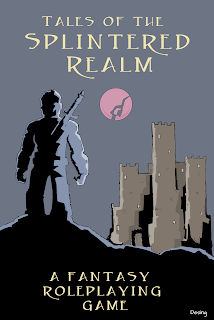Rut Roh.
I keep going back and tinkering with foundation concepts that underpin everything. I figure, this is my chance to do that, so I may as well at least investigate options as they come to mind.
One of the things that occurred to me last night while rolling up a fighter was attribute scores - if you are a fighter at level 1 who doesn't have STR 12, you are at a disadvantage. You are losing +1 to hit and damage every round just by dropping to 11, and +2 to hit and damage every round if you let STR slip to 9. And a fighter with STR 7? Fugeddaboutit. You are looking at a loss of +3 to both hit and damage every single time you attack.
The other issue arises at the top end. One of the intentional things in magical item design is trying to keep attribute creep under control. If you pick up an item that gives you giant strength, you have both STR 18, and +6 to attack and damage rolls in combat, which is HUGE. You are dealing tremendous damage with every swing.
What if we cut the scale down considerably, and put our break points every 4, rather than every 2, attribute points. Here's an example of how that might look:
Rating 2-5 (-1 modifier). Below average range.
Rating 6-9 (no modifier). Average range.
Rating 10-13 (+1 modifier). Exceptional range.
Rating 14-17 (+2 modifier). Heroic range.
Rating 18-21 (+3 modifier). Epic range.
Rating 22+ (+4 modifier). Beyond mortal ability.
Now, your level 1 fighter can have STR 10, 11, 12, or 13 and get +1 to attacks and damage. Or, he can have a 'lowly' STR of 6, and only be +1 back from a much stronger fighter.
It's not that your high STR doesn't matter. The game relies on a large number of checks, so your high strength score still makes a difference. Just not in combat.
Now, you can pick up a gauntlet of storm giant strength (STR 18) and rock the checks - you can rip doors off their hinges and lift huge weights. But, you are still only getting +3 to attack and damage, so it's not breaking the game in terms of bonuses. Your level still matters a lot, and your magical weapon is just as important. This keeps attributes in line with other, comparable scales.
Let's look at other implications:
For INT, this means that the formula for arcane spells would be different; your number of spells would be your tier + your INT modifier. As a tier 3 caster with INT 10, you get 4 spells of tier 1, 3 spells of tier 2, and 2 spells of tier 3 each day. If you can get that INT to 14, you get 1 more spell of each tier. It's not a game breaker, but it's a nice perk for having that exceptional intelligence. You can still be a magic user with INT 6... it's just going to be a little bit harder for you. The difference between 6 and 14 matters, but it's not an impossible difference. However, those lore checks are going to be far, far easier for the smarter magic user.
WIS and CON work the same way with their spells.
DEX modifiers to armor class would be mitigated, which keeps AC scaled a bit lower - which aligns with how AC scales for monsters a little better. I am ALMOST tempted to allow you to add your level to AC (as happens with my other games), and to make the armor you wear less important. Now we're DEEP into tinkering with the rules. However, your ability to get out of the way of damage should in large measure be a facet of experience. A magic user 1 and magic user 6 with the exact same gear should not be just as easy to hit; that second magic user has been in hundreds of battles, and has learned how to avoid being hit.
Since the game only goes to 6 levels, this is easy to mitigate. At the top end:
That magic user 6 has a ring of protection +3, and has DEX 14 (+2) from magical items. He has AC 21. In the current system, he has AC 15.
A fighter 6 has a suit of plate mail (+3) with a +3 enchantment, carries a shield (+2) with a +3 enchantment, but gets no DEX bonus because of the heavy armor. He has AC 27. In the current system, he would have AC 23.
Don't love how this is scaling. It works to add level for the supers and army ants games, because there are so few add-ons in game that contribute to AC, but here (where there is a lot of magic), that's not so much.
We could always scale back magic, too, so that there are only 2 levels of enchantment - enchanted and mystical. This would cut our magic user down to a 20 AC at level 6, and our fighter down to 25... and if we pull the AC bonus from a shield back to +1 (which makes more sense here), he's now down to AC 24. Again, your level matters more than your gear.
I'm going to let this simmer for a day or two...

















